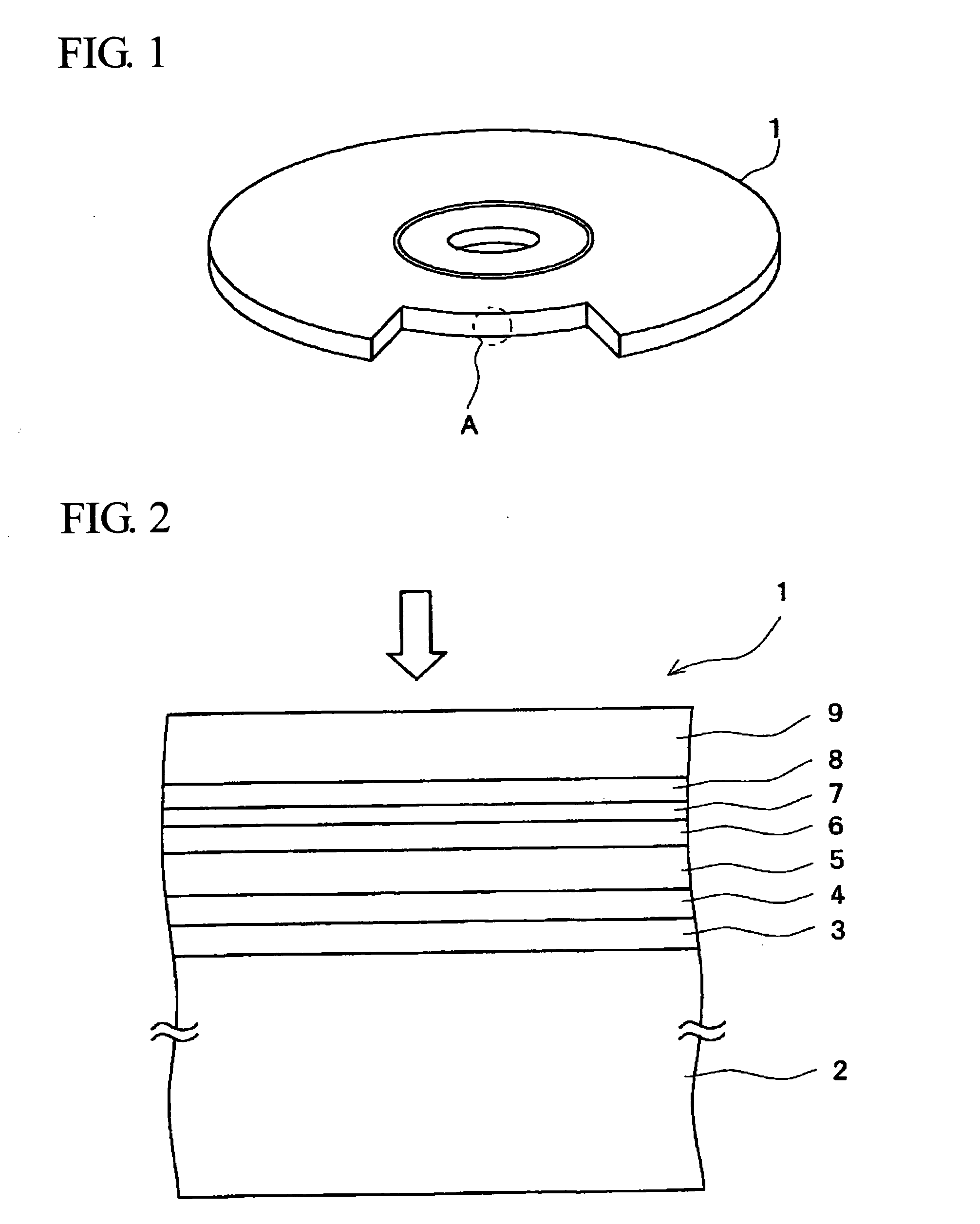Optical recording medium
a technology of optical recording medium and optical recording medium, which is applied in the field of optical recording medium, can solve the problems of inability to reproduce data from the optical recording medium, inability to shorten the wavelength of the laser beam used in reproducing data, and inability to achieve the effect of increasing the numerical aperture na of the object lens,
- Summary
- Abstract
- Description
- Claims
- Application Information
AI Technical Summary
Benefits of technology
Problems solved by technology
Method used
Image
Examples
example 1
[0109] A polycarbonate substrate with a thickness of 1 mm and a diameter of 120 mm is set in a sputtering device to form a reflective layer with a thickness of 20 nm on the polycarbonate substrate using an alloy target of Ag, Pd, and Cu by a sputtering method.
[0110] Next, using a mixture target of ZnS and SiO2, the third dielectric layer having a thickness of 120 nm is formed on a surface of the reflective layer. As the mixture target of ZnS and SiO2, a target of which a molar ratio of ZnS:SiO2 is expressed by 80:20 is used
[0111] Next, using an alloy with a composition of Sb75Te25 as a target, the light absorbing layer having a thickness of 20 nm is formed on the surface of the third dielectric layer by a sputtering method.
[0112] Next, using a mixture target of ZnS and SiO2, the second dielectric layer having a thickness of 75 nm is formed on the surface of the light absorbing layer by a sputtering method. As the mixture target of ZnS and SiO2, a target of which a molar ratio of ...
PUM
| Property | Measurement | Unit |
|---|---|---|
| reflectance | aaaaa | aaaaa |
| thickness | aaaaa | aaaaa |
| decomposition temperature | aaaaa | aaaaa |
Abstract
Description
Claims
Application Information
 Login to View More
Login to View More - R&D
- Intellectual Property
- Life Sciences
- Materials
- Tech Scout
- Unparalleled Data Quality
- Higher Quality Content
- 60% Fewer Hallucinations
Browse by: Latest US Patents, China's latest patents, Technical Efficacy Thesaurus, Application Domain, Technology Topic, Popular Technical Reports.
© 2025 PatSnap. All rights reserved.Legal|Privacy policy|Modern Slavery Act Transparency Statement|Sitemap|About US| Contact US: help@patsnap.com



